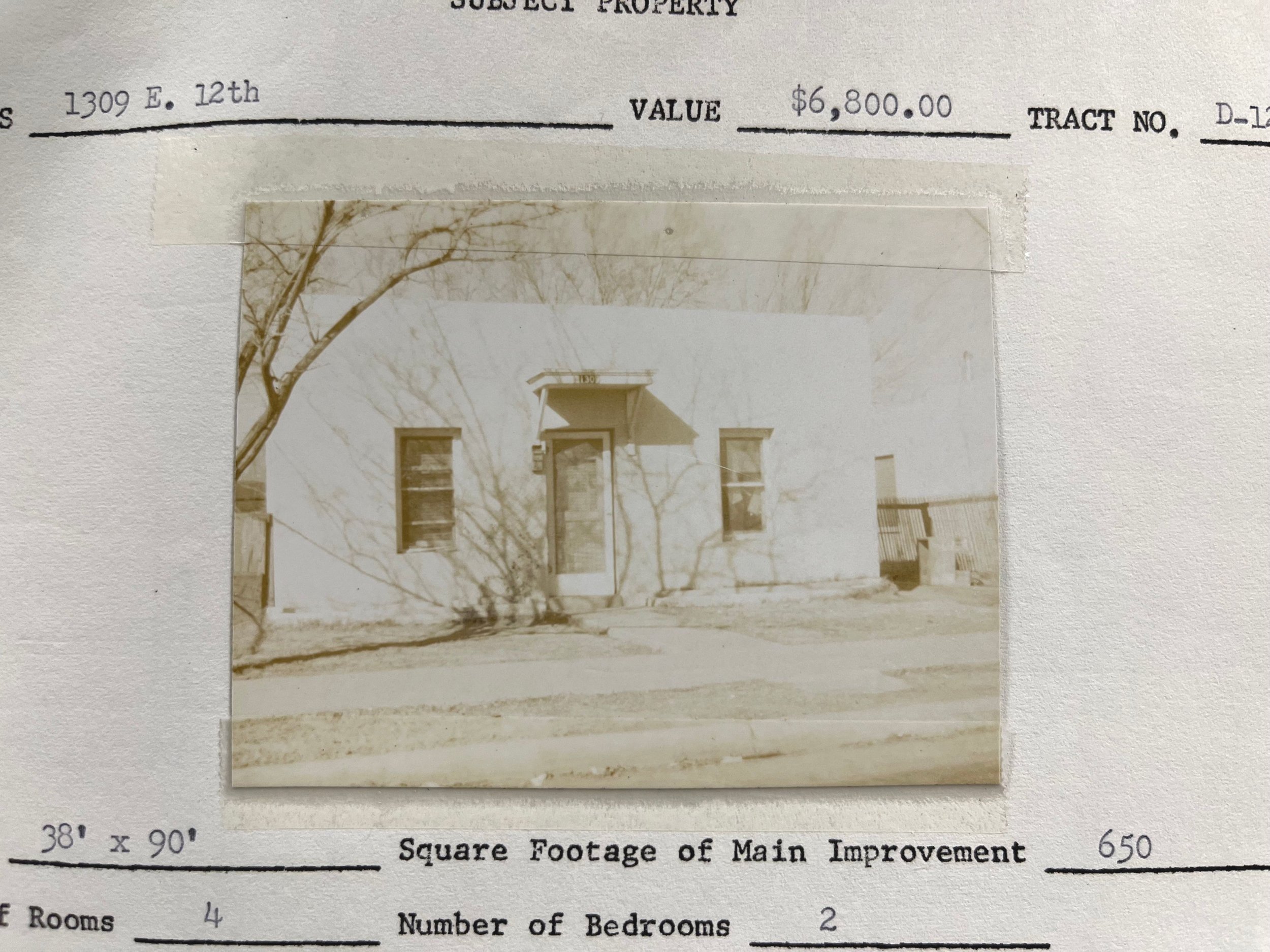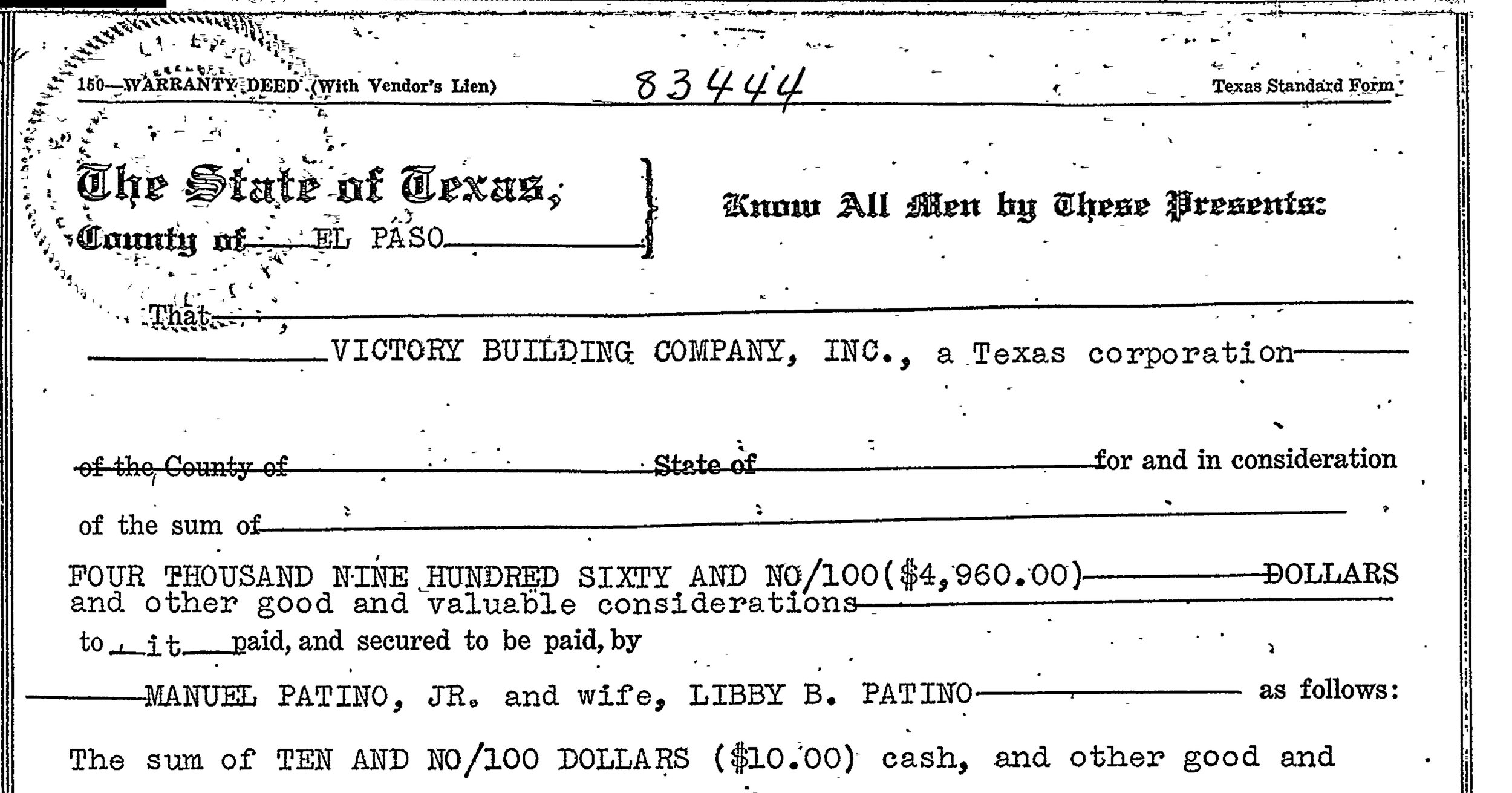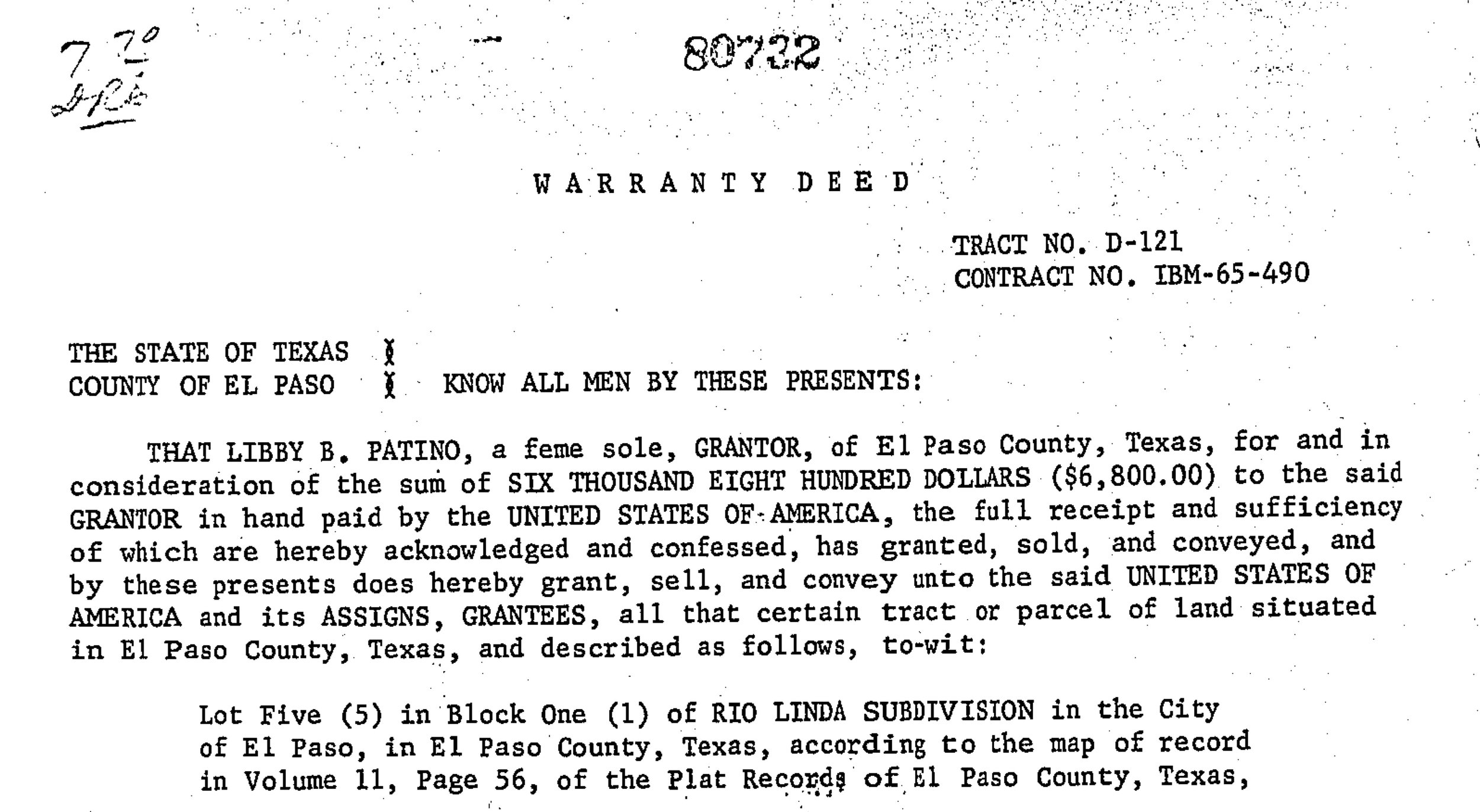Libby Bahena Patino (1911-1986)
Libby Patino and her husband, Manuel Patino, bought their Chamizal home in 1946. The house stood on 1309 12th Street in the recently established Rio Linda subdivision to the City of El Paso.
Soon thereafter, Libby began meeting with city officials to try to convince them to allocate city and county resources to Rio Linda. During her lunch hour as an employee at the downtown JC Penny, Libby met with officials to discuss the unpaved streets in Rio Linda and the frequently flooding after rain. Once she had convinced the city to pave the streets, she recounted to the El Paso Herald Post in 1967, “we made arrangements with the bus company for the buses to drive us closer to our homes.” Next, she went to the Downtown Post Office. There, she met with the post office manager. Although Rio Linda was still a small community, she told him, the neighborhood was growing and in no time at all would have hundreds of residents who needed their mail delivered directly to them. Libby eventually convinced the post office to deliver mail directly to Rio Linda residences.
“The place looked better after everything was installed and after the streets were paved,” Libby told the Herald reporter. The story was headlined “El Pasoan Recalls Chamizal Years.”

El Paso Herald-Post, May 20, 1948
As local reports in the El Paso Herald-Post indicate, Libby was only one of several Rio Linda residents who organized to demand the City of El Paso correct the structural inequalities impacting the well-being of the Rio Linda community.
In 1948, for instance, just two years after Rio Linda was added to the city of El Paso, Libby and 35 other Rio Linda residents petitioned the City Council to extend sewer lines to the neighborhood after septic tanks installed by the neighborhood’s developer began failing and overflowing. “The septic tanks installed by the developers of the neighborhood are supposed to be good for one year and that year has expired,” reported the El Paso Herald-Post on May 20th of that year. Rio Linda homeowners petitioned the city council to address the issue, but “[p]etitioners say they can’t get action,” the Herald reported. Instead, city officials told petitioners that if each household in Rio Linda had fewer family members the septic tanks would have lasted longer. “As a temporary measure,” a city employee “suggested digging a seepage pit, which he said would increase capacity of existing facilities.” Blatant disregard and structural inequalities such as these in El Paso’s southside, including Rio Linda, became the target of organized women like Libby Patino.
Here’s Libby Patino in 1958.
When this photo was taken, she had been living in Rio Linda for just over ten years. Four years later, word of a proposed Chamizal Treaty will begin arriving to South El Paso.
El Paso Herald Post, April 15, 1958
When Libby and her husband, Manuel, bought their home on 12th Street in 1946, they could not have known that less than 20 years later, the property would be condemned and deemed Mexican territory.
-

1946: Patinos become homeowners
Libby and Manuel bought their Rio Linda property from Victory Building Company Inc. for $4,960 in 1946. According to Libby, they were the first to buy property in Rio Linda and the forth to move into the neighborhood.
-

1965: Libby Patino sells property to the United States of America
By 1965, Libby had become a widow and found herself negotiating the sale of her home as part of the Chamizal Treaty. The United States purchased the house $6,800. The land on which this home once stood is now south of the international boundary in Cd. Juarez.
A real estate appraiser hired to evaluate and appraise Chamizal properties originally appraised Libby’s property as $6,600. He described the home as:
“Front yard, grass, in fair cond. Rear yard and grass negligible. Inside fail cond, needs paint. Outside in fair cond., needs paint.”
Source: William E. Woods Papers, Chamizal National Memorial Archives



